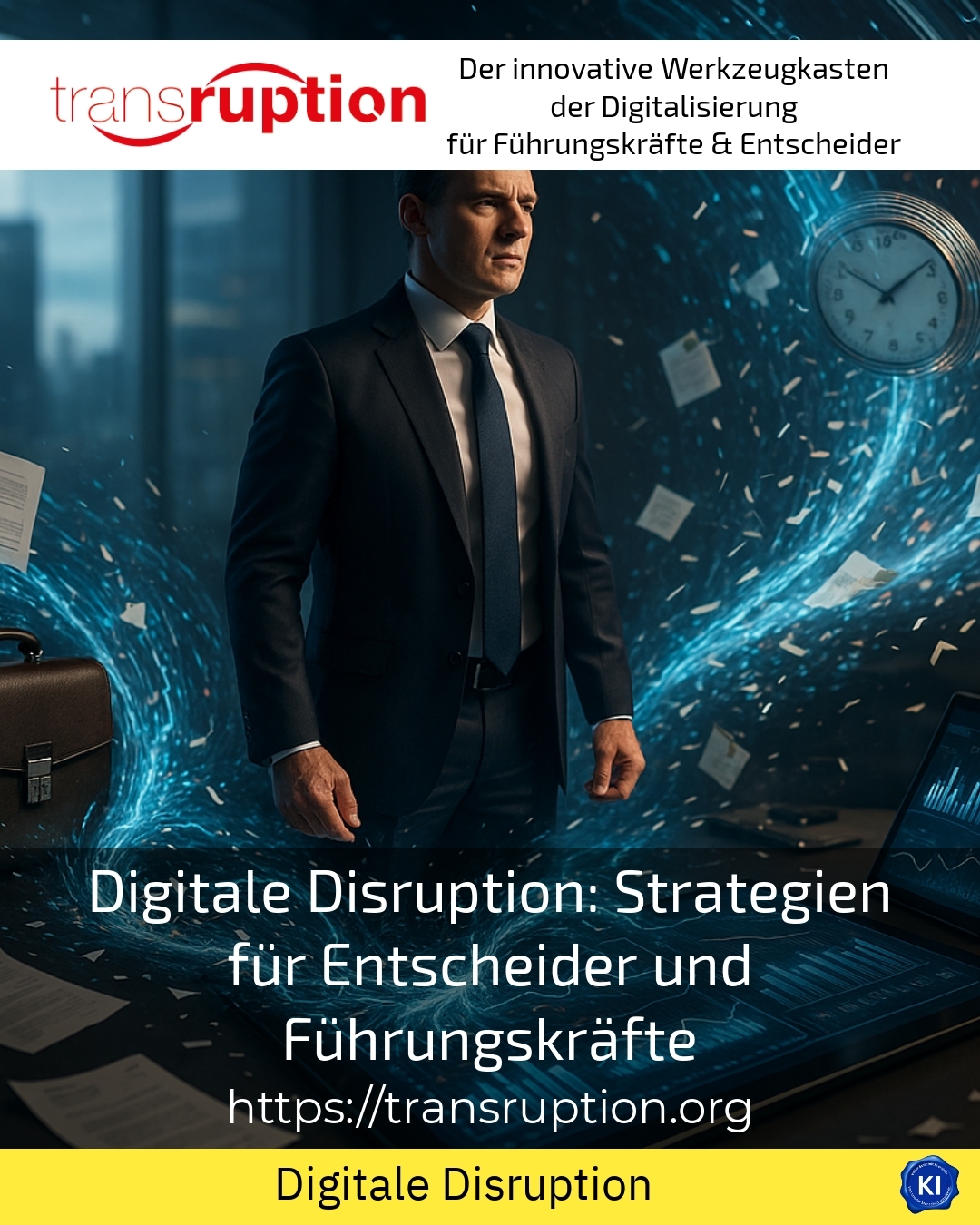Digital disruption** poses major challenges for managers and decision-makers. The rapid development of digital technologies is fundamentally changing markets, business models and customer needs. If you want to be successful as a manager, you need to develop strategies that accompany and actively shape this change. This article shows how managers can understand digital disruption and respond to it with concrete measures.
The importance of digital disruption for companies
Digital disruption refers to the radical transformation of industries through digital innovations. These change established business models and customer relationships in the long term. For example, Airbnb has redefined the hotel industry through a digital platform. Customers can book cheap and flexible accommodation with private individuals, putting traditional hotels under pressure. Netflix has also changed the media and entertainment industry with its streaming services, displacing traditional DVD rental companies. Amazon has also revolutionised the retail industry by creating a digital marketplace platform that connects retailers and customers directly.
For decision-makers, this means that existing competitive advantages are being challenged by new market players. Successfully dealing with digital disruption therefore requires monitoring market trends and quickly recognising new technologies. It is important not only to react defensively to threats, but also to proactively seize new opportunities.
Strategies for successful navigation through digital disruption
In practice, various strategic approaches have proven their worth in helping managers to overcome digital challenges:
1. offensive innovation to utilise opportunities
Companies can utilise digital gaps through innovations and address new customer groups. Tesla, for example, has reshaped the automotive industry with electric cars and self-driving technologies and is providing clear impetus towards sustainable mobility. The music platform Spotify developed a subscription model that caused a sharp decline in sales of physical sound carriers such as CDs, thus disrupting existing value chains. Decision-makers should promote innovative strength by introducing agile processes and initiating targeted digital pilot projects.
2. defensive optimisation of existing business areas
The so-called harvest strategy aims to monetise shrinking business areas in the best possible way for the time being. Netflix, for example, is continuing to modernise its DVD rental business through digital automation, although the focus is on streaming. Such measures extend the lifespan of core segments and create financial scope for innovation. For managers, this means making timely decisions about restructuring or exits while capitalising on proven strengths.
3. development of digital platforms and ecosystems
Many successful digital business models are based on platforms that bring together external providers and customers. Amazon started out as an online bookseller, but has developed into the largest trading platform with millions of third-party providers. Uber, the largest taxi company, does not own any vehicles, but instead markets private resources through its app. This allows companies to react flexibly to new needs and distribute added value efficiently. For decision-makers, this means building a digital infrastructure that facilitates new partnerships and collaborations.
BEST PRACTICE at the customer (name hidden due to NDA contract) In a pilot project, the company integrated a platform solution for bundling local service providers who supplied goods regionally without holding their own stocks. This made it possible to significantly expand the product range and shorten delivery times. The change supported the transformation from a traditional retail business to a modern omni-channel player.
Essential success factors for managers in the age of digital disruption
In addition to strategy, decision-makers must also shape the corporate culture. Digital change will only succeed if managers have an open attitude towards experimentation and promote agile methods. Digital skills need to be developed further and a learning culture established. Many managers report that the change towards more flexibility and customer centricity is often associated with resistance. Successful support means taking these concerns seriously and developing solutions together.
The integration of artificial intelligence or the use of large amounts of data (big data) also opens up new opportunities for data-driven decisions. Companies in the financial sector, for example, use automated credit checks to speed up processes. In retail, personalised recommendations enable an improved customer experience and higher sales.
Digital disruption: fields of action for sustainable transformation
To summarise, experience shows that digital disruption requires a holistic reorientation along several axes:
- Business model innovation to tap into digital opportunities
- Efficient use of digital technologies to stabilise existing offerings
- Building flexible platforms and ecosystems for new value creation
- Promotion of an agile corporate culture and digital skills
- Strategic use of data and artificial intelligence
These approaches support managers so that they can effectively navigate their organisation through digital disruption and provide positive impetus for growth.
My analysis
Digital disruption is not a temporary phenomenon, but a permanent challenge and opportunity at the same time. Decision-makers and managers are required to continuously adapt their business models and structures and actively integrate digital innovations. A balance between defensive stabilisation and offensive reinvention is crucial. Only those who strategically utilise digital potential and promote collaborative business models will survive the competition in the long term. The targeted support provided by transruption coaching can effectively support digital disruption projects and provide valuable impetus.
Further links from the text above:
[1] Strategies for Responding to Digital Disruption - IMD Business School
[2] Digital disruption and megatrends in digital marketing
[4] Digital Disruption - OMR
[5] What is Digital Disruption? | Raven
[8] Disruptive business models: creating new markets
For more information and if you have any questions, please contact
Contact us or read more blog posts on the topic
TRANSRUPTION here.
















